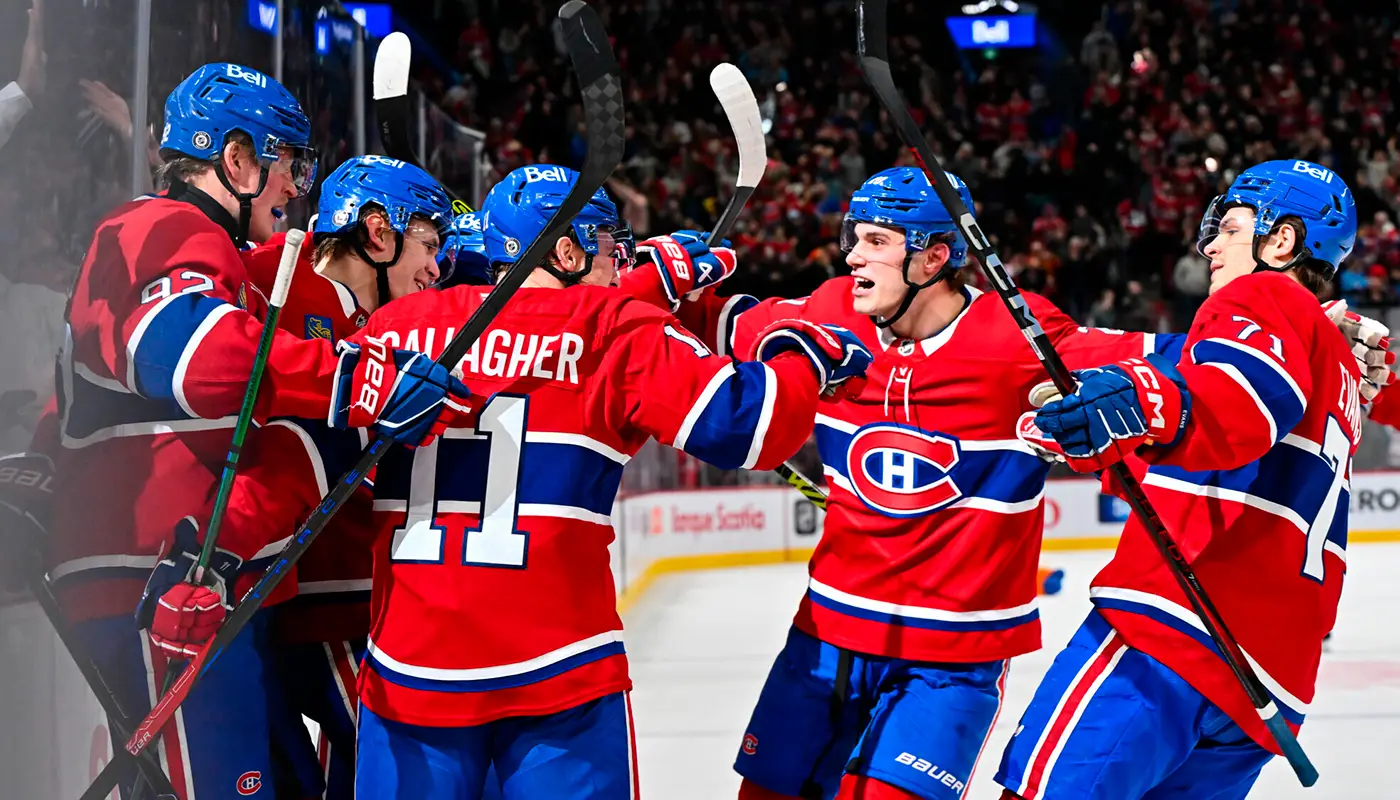Modern ice hockey is no longer limited to arenas and trophies. Contracts, advertising deals and bonuses have turned athletes into a kind of capital investment. The world’s most expensive ice hockey players in 2025 have become financial heavyweights who are setting trends not only in the NHL. Clubs build their budgets around leading players, sign contracts worth tens of millions, and compete for names rather than just points. The new season has shown that betting on stars pays off faster than any systemic restructuring.
The market system: How NHL ice hockey players’ salaries are determined
Salaries no longer reflect just the game. The calculation system includes marketing potential, media presence, popularity in Asia and participation in the club’s results.

The highest-paid ice hockey players have stable statistics in terms of goals and assists, but the decisive factor is contract options. Bonus payments for results, leadership qualities in the dressing room, efficiency in the playoffs – everything is taken into account. Advertising contracts with equipment manufacturers and sports brands increase total income by one and a half to two times.
A player who scores 100 points per season automatically receives an increased coefficient. The presence of trophies, such as the Stanley Cup or the scoring title, forms the basis for a review of the terms.
Ranking of the most expensive ice hockey players in the world in 2025
 The contracts of leading players have long since surpassed the limits of the last decade. In 2025, the world’s most expensive ice hockey players will not only demonstrate their performance capabilities, but also their influence – on the team, marketing, playing style and the league’s economy. A list of players who set standards on and off the ice:
The contracts of leading players have long since surpassed the limits of the last decade. In 2025, the world’s most expensive ice hockey players will not only demonstrate their performance capabilities, but also their influence – on the team, marketing, playing style and the league’s economy. A list of players who set standards on and off the ice:
- Connor McDavid (Edmonton Oilers) – $15.5 million. The club captain has won the Stanley Cup three times, is a leader in speed and has scored 115 points in the regular season. He sets the pace for the entire team and boosts the performance of his teammates. He became a global ambassador for the CCM equipment line and appeared in a large-scale advertising campaign reaching millions of people.
- Auston Matthews (Toronto Maple Leafs) – $14.7 million. Winner of the award for best goal scorer, he has a streak of 18 consecutive games with points. He has the best shooting percentage at 23.9%. Used in power play and penalty kill situations. Leads the rankings of the highest-paid ice hockey players in the USA.
- Mikko Rantanen (Colorado Avalanche) – $13.8 million. The Finnish winger has signed a 7-year contract and is the top scorer in power play situations with 19 goals. He has an unusual shooting technique from an unfavourable position and sets the pace in power play situations. He is regularly used in the decisive minutes of the game. One of the main contenders for the MVP title of the season.
- Victor Hedman (Tampa Bay Lightning) – $13.4 million. The experienced defenceman and club captain directs the breakout from the zone and sets up the first wave of attacks. He leads the defencemen in assists with 58 per season. Despite his position, he made it into the top 5 assist leaders in the entire league. He is the face of the franchise and a mentor to young players.
- Kirill Kaprizov (Minnesota Wild) – $12.9 million. He was drafted as the number one pick at the time and became a central figure in the club’s rebuild. He lost the scoring lead by one point but scored 11 game-winning goals. He increased the club’s media presence in the domestic market and signed contracts with two national brands.
- Karel Vaněček (New Jersey Devils) – $12.5 million. Goaltender for the Czech national team, saves 93.2% of shots, recorded 9 shutouts during the season. Winner of the trophy for best goaltender, recognised by coaches in 28 teams. One of the five most reliable goalkeepers in the final minutes of the game. Provides stability in defence and confidence to the defenders.
- Charlie McAvoy (Boston Bruins) – $11.8 million. Right-handed defender with high passing accuracy – 92.7%. Actively participates in attacks and plays an important role in power play situations. Combines physical play with the ability to escape from pressure situations. Received an extended contract as the foundation of the new defensive core.
- Matthew Bold (Calgary Flames) – $11.2 million. The young Canadian set a record for goals while shorthanded – 8 – and scored 3 game-winning goals in playoff overtime. He was named Most Valuable Player four times per season. He is a contender for the All-Star Game. He represents the new generation of powerful North American ice hockey.
- Leon Draisaitl (Edmonton Oilers) – $10.9 million. The experienced German is among the top five players in terms of shooting accuracy, with more than 270 shots per season. He has maintained a level of over 90 points for five consecutive seasons. He has become a mentor to the club’s young players. He is one of the few who performs consistently without losing efficiency in the regular season and playoffs.
- Risto Lahtinen (Dallas Stars) – $10.5 million. The right-handed defenceman dominates in numerical superiority, realises 34% of offensive crosses and has more than 40 assists per season. The contract includes a performance bonus of +25% if he finishes in the top 3 defencemen. One of the most versatile defencemen in the modern NHL.
The most expensive ice hockey players in the world are determined not only by their statistics, but also by their influence on the club, the result and the economy. Each of the players featured sets the pace, determines the style and strengthens the team’s position. Their contracts are no coincidence, but the precise result of investments in the game, reputation and efficiency.
Contract mechanics: structure and flexibility of agreements
Modern contracts are becoming less rigid. The world’s most expensive ice hockey players sign flexible agreements with the option of extension, buyback, freeze or restructuring, depending on the form. The base salary accounts for only 60–70% of income. The rest comes from bonuses: for reaching the playoffs, for participating in the All-Star Game, for finishing the regular season in the top 10 in points or assists. Added to this are advertising contracts – Nike, CCM, Bauer, Gillette.
Clubs that pay the maximum: the geography of money
The frontrunners in terms of contracts are unevenly distributed. The Eastern Conference is actively interested in retaining stars, while Western clubs focus on the draft:
- Financially strong giants. Financial giants such as the clubs from New York, Toronto and Las Vegas spend more than 90 million annually on the five best players.
- The draft as a source of savings. Clubs with smaller budgets rely on talented young players. A successful draft reduces costs and opens up the possibility of re-signing stars at the beginning of their careers at a reduced price.
Efficiency and statistics: what are you paying for?
The numbers say it all. The most expensive ice hockey players in the world hold top rankings in all areas:
- goals, assists, points. Forwards with a productivity of 1.3 points per game are given priority. Defenders who score 40 to 50 assists are considered key players in power play situations. Goalkeepers with a save percentage of over 92% are automatically included in the rankings.
- Role in the team. Captains, leaders in the locker room and members of the most important five-man groups receive a bonus for their consistency.
Positions and their value: Who is worth more?
Forwards traditionally top the list, but in 2025 the situation has evened out. Clubs have started paying defenders and goalkeepers the same salary as forwards.

Forwards. The first line with a high scoring rate scores the most goals. Players in this position receive the highest contracts and participate in the most promotional activities.
Defenders. Defensive leaders receive special value for their versatility – majority output, passing accuracy, blocks. A defender who plays an average of 28+ minutes per game receives a contract comparable to that of a top striker.
Goaltender. A key figure in reaching the finals. The goaltender position is no longer considered ‘second string’ – clubs include it in their list of priorities when allocating their budget.
The most expensive ice hockey players in the world in 2025: a market with high speeds and stakes
 The world’s most expensive ice hockey players in 2025 will not only influence the scoreboard, but also the NHL’s economy. Every contract, every trophy, every advertisement is part of a complex formula. Clubs don’t just pay for goals; they invest in influence, media presence and leadership qualities. Statistics and emotions, efficiency and charisma – all of this becomes part of a financial architecture in which the ice hockey player is a top-class product.
The world’s most expensive ice hockey players in 2025 will not only influence the scoreboard, but also the NHL’s economy. Every contract, every trophy, every advertisement is part of a complex formula. Clubs don’t just pay for goals; they invest in influence, media presence and leadership qualities. Statistics and emotions, efficiency and charisma – all of this becomes part of a financial architecture in which the ice hockey player is a top-class product.
 en
en  ru
ru  de
de  ar
ar  es
es  hi
hi  fr
fr  nl
nl  it
it  pt
pt  el
el 



